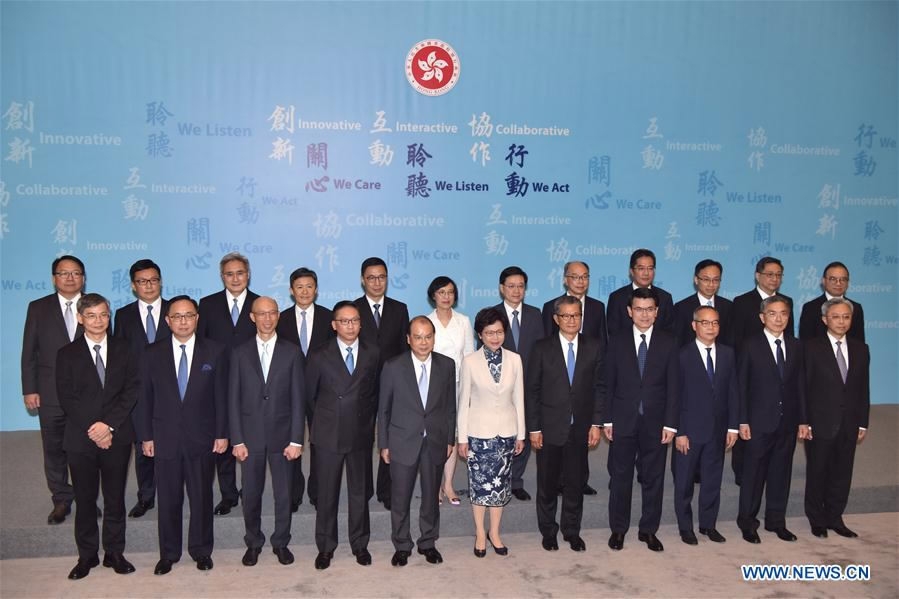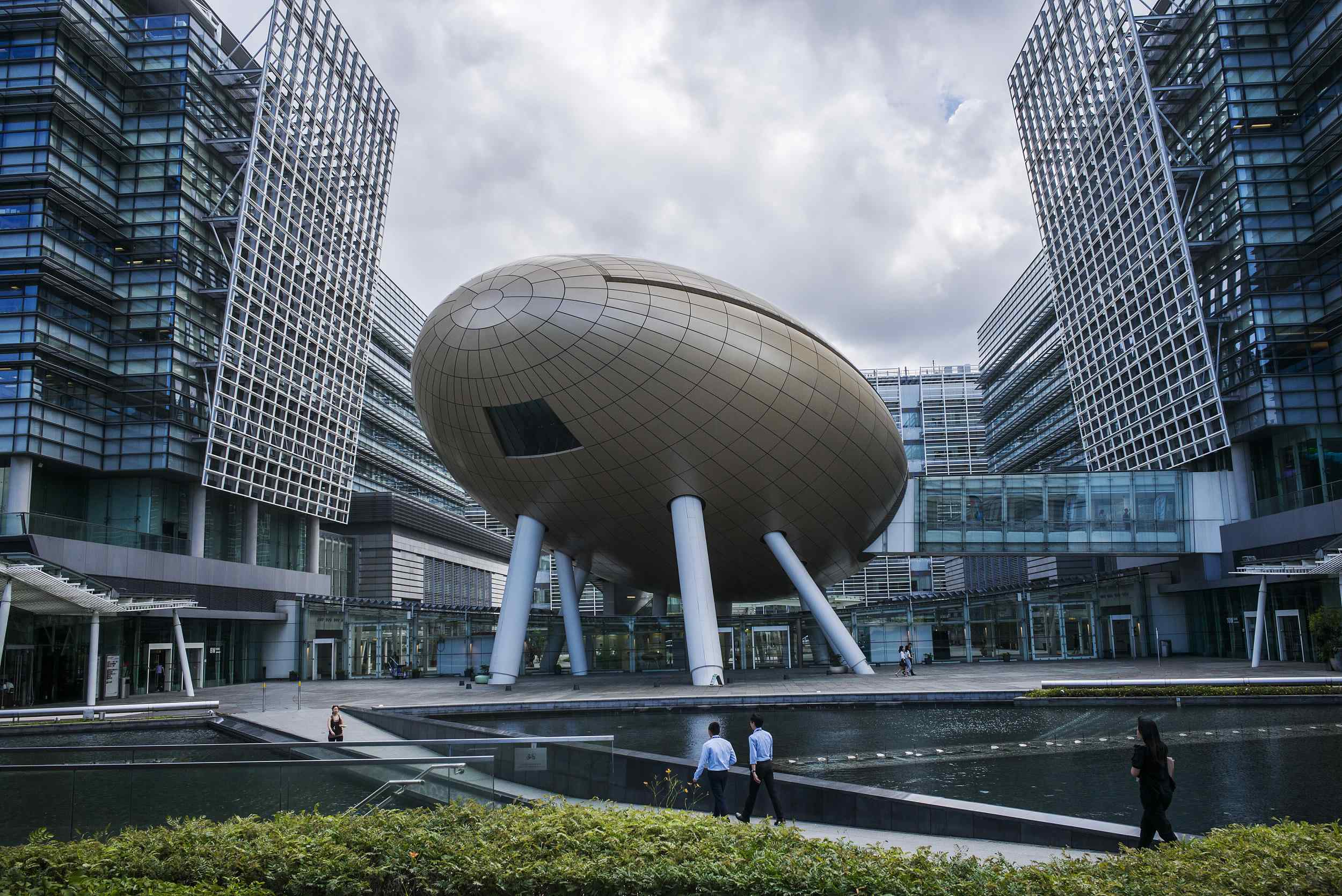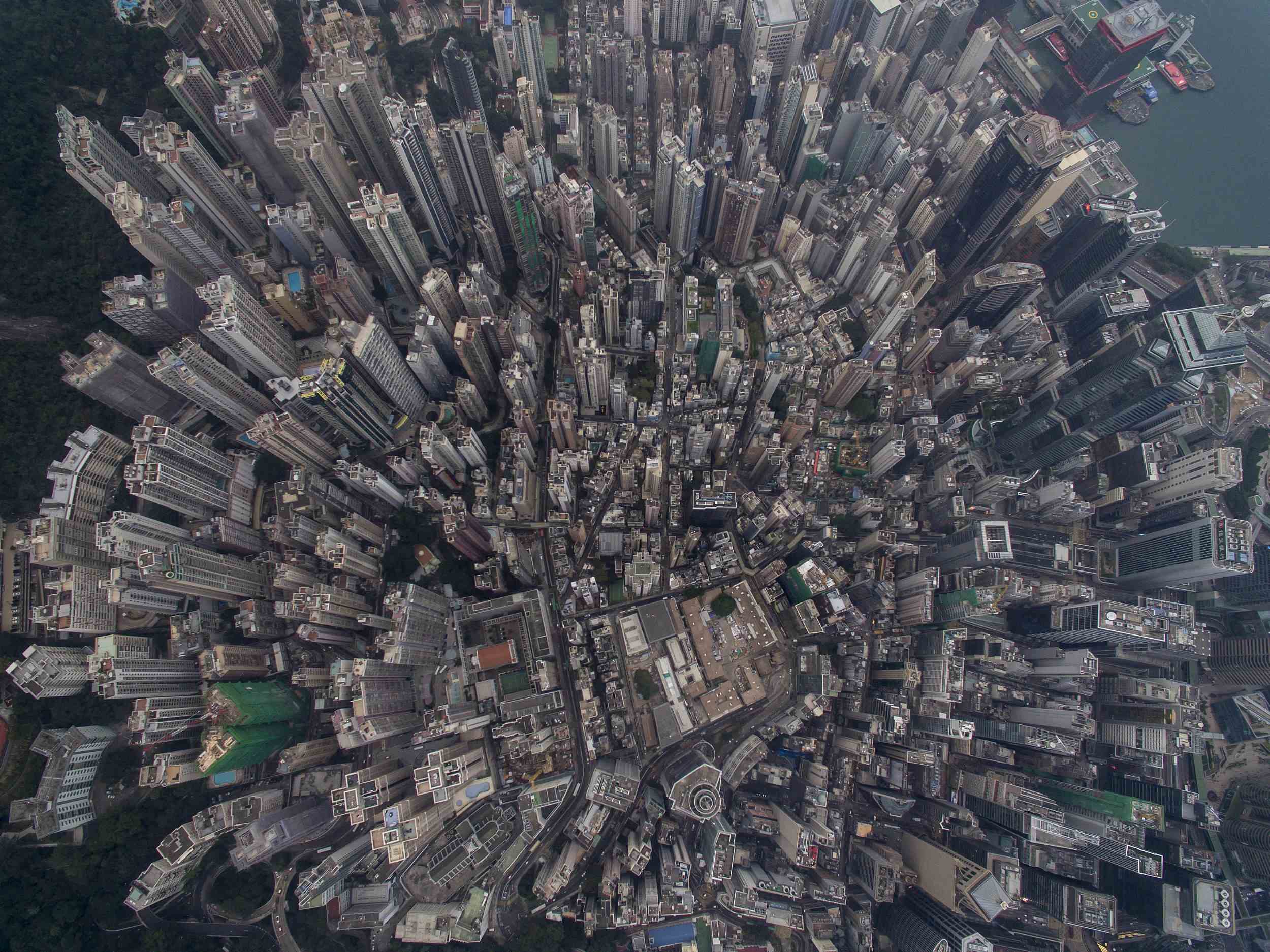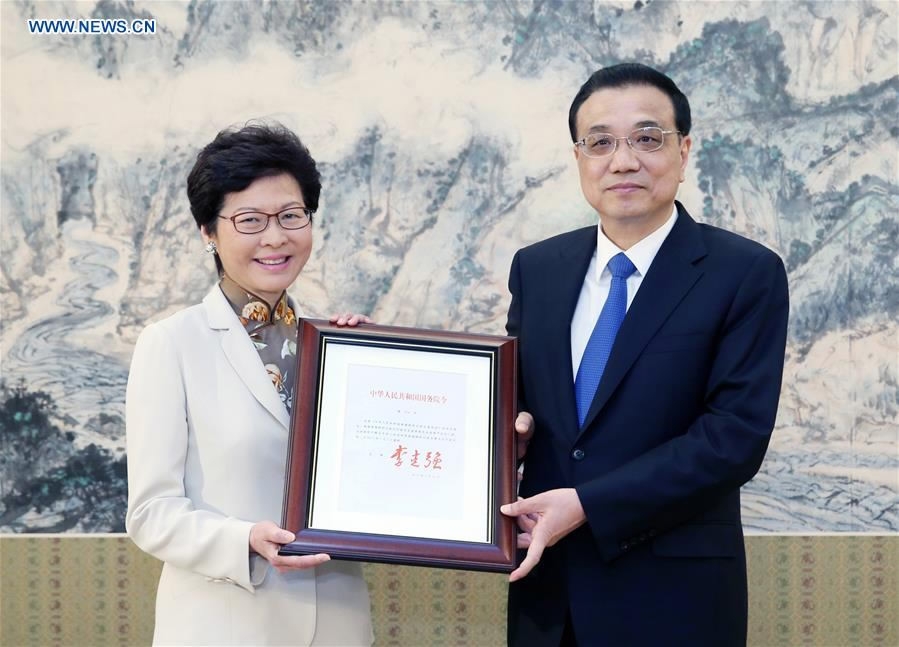Carrie Lam Cheng Yuet-ngor will soon be taking over the top post in Hong Kong Special Administrative Region. She will be assuming the mantle of leadership with plans to boost the competitiveness of the region, inject impetus to local economy, and support housing, education and equality.
After securing her victory in March, Lam promised to commit to fulfilling her campaign manifesto promises - but challenges lie ahead, from land supply shortages to inequality and little opportunities for the region's youth.

Incoming chief executive Carrie Lam (C front) and top officials of the incoming government of the Hong Kong SAR pose for a group picture during a press conference in Hong Kong, on June 21, 2017. /Xinhua Photo
"My expectation for Hong Kong's future is to offer its citizens a place where they can live with satisfaction," Lam has said during an interview with CGTN.
On July 1, she will officially become Hong Kong's first female leader after being sworn in as the fifth-term chief executive of Hong Kong SAR, which celebrates the 20th anniversary of its return to China on the same day.
What will Lam be working to achieve? And what tops her agenda?
A more innovative Hong Kong
Hong Kong enjoys a business-friendly environment and world-class communications and logistics services, which have all made the region a vibrant financial hub. However, Lam has pointed out that the city is lagging behind its international rivals when it comes to technology and innovation development.
According to the 2017 Global Innovation Index, Hong Kong has slipped for the fourth year in a row on the global benchmark of innovation, ranking 16th worldwide – its lowest ever position. In 2013, it was 7th on the same list, which surveys 130 economies.
At present, expenditure on research and development in Hong Kong accounts for just 0.74 percent of the region's GDP - well below that of its neighbor Shenzhen, which has reached 3.4 percent.
From "Made in Hong Kong" to "Created by Hong Kong," the incoming chief executive has named technology and innovation as two of her priorities to boost the local economy in the next five years.

People walk along a pedestrian bridge in Hong Kong Science Park on June 6, 2017. /VCG Photo
In her manifesto, Lam suggested two new tax measures to relieve the burden on small and medium-sized enterprises - a move, she said, would boost investment in research and development.
A two-tier tax regime would result in a tax reduction from 16.5 percent to 10 percent for companies with an annual profit of less than two million HK dollars.
She has also proposed "super deductions" for investment in areas such as innovation and technology, research and development, as well as environmental protection measures.
Investment in education
"Education is an investment that should be stable and continuous," said Lam on the campaign trail, noting that there have been "problems" with how education policies have been implemented in recent years.
Despite expenditure on education doubling from 37 billion HK dollars in 1997 to nearly 79 billion HK dollars in 2016, the fraction reserved for this sector from the government's total spending has declined in the past 20 years.
Describing the government's education spending as hitting a "new low," Lam has proposed to immediately increase recurrent expenditure on education by five billion HK dollars a year, up 6.7 percent from the current level.
The plan would include setting a pay scale for kindergarten teachers, additional subsidies to allow schools to hire more primary and secondary teachers and improving special education.
Affordable housing

Aerial photo shows dense buildings in Wan Chai district, Hong Kong. /VCG Photo
The dream of owning a home has turned into a nightmare for many young, middle-class families in Hong Kong as property prices soar.
"Increasing housing supply and developing new land are my top priority after taking office," Lam said in response to the problem that worries Hong Kong residents most.
Lam has proposed measures including increasing supply for Green Form Subsidized Home Ownership Scheme, which started in 2015 to reduce the waiting time for public housing flats by encouraging tenants to buy a subsidized flat at a 40 percent discount to the market price.
A citywide census on how best to increase Hong Kong’s land supply is also on the chief executive-elect's agenda. The public would be asked to consider different options such as land reclamation from the sea and developing parts of parks or brownfield sites, said Lam.
'A long way to go'

Chinese Premier Li Keqiang (R) grants the official certificate of appointment to Carrie Lam as new chief executive of the Hong Kong SAR in Beijing on April 11, 2017. /Xinhua Photo
"When I received the appointment, I felt the heavy burden on my shoulders and we still have a long way to go," said the veteran politician, who just celebrated her 60th birthday.
How will she tackle the obstacles and make good on her promise of a promising future for Hong Kong residents? Time can only tell.
Related stories:
Carrie Lam: 'One Country, Two Systems' maintains Hong Kong's prosperity
Hong Kong chief executive decodes success of 'One Country, Two Systems'
'One Country, Two Systems' proven to be a success in HKSAR: senior Chinese official
First Hong Kong Chief Executive Tung Chee-hwa on the city’s ups and downs










